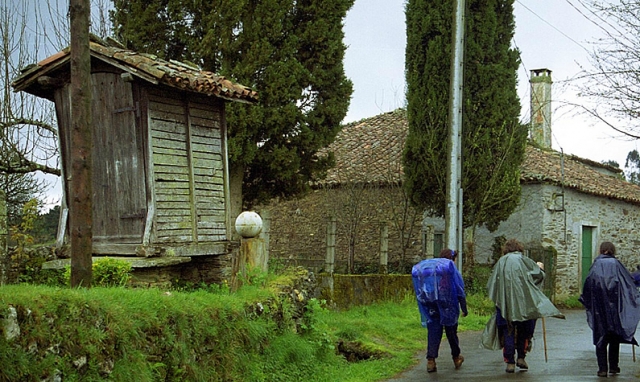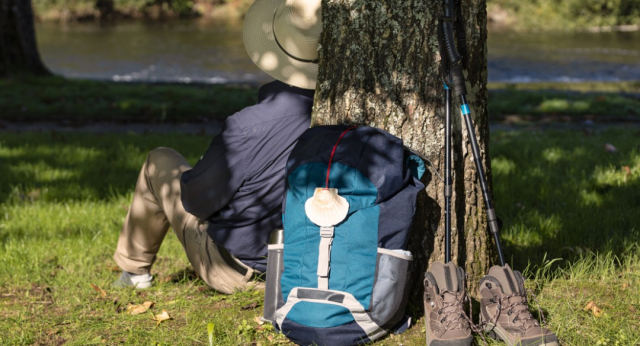Last 100 km of the Camino de Santiago: Complete Guide
We present you with a complete guide to cover the last 100km of the Camino de Santiago, meeting the minimum distance required to obtain the Compostela.
Why walk the last 100 kilometers of the French Way?
The Camino de Santiago is a set of Jacobean routes that runs throughout the Peninsula with a single destination: the Cathedral of Santiago de Compostela. Of these multiple routes, it is the French Way, which is born in the Pyrenees, the most chosen route year after year by pilgrims (186,189 walkers, 57% of the total). The French route, of medieval origins, is one of the longest of all the Jacobean routes: it is divided into 31 stages that run through 7 different provinces during 760 km and has two variants (Roncesvalles and Somport) that merge in the Navarre town of Queen's Bridge.
Many pilgrims decide to travel this symbolic distance for several reasons: for making a first contact with the Camino de Santiago (a kind of "baptism" as pilgrims), for having only one free week to travel and travel, for having doubts with our state of form, for traveling as a family with the little ones ... Although we recommend extending our journey to live a more complete Jacobean experience, traveling for the first time the last 100 kilometers of the Camino de Santiago can become a very positive experience that we Encourage him to go back to it later.
Not only can you travel the last 100 km of the French Way to Santiago to get the compostela, you can also use the same formula with the Portuguese Way (from Tui), Primitive Way (from Lugo), Northern Way (from Baamonde) or the English Way (from Ferrol). All these starting points located in Galicia are 100 km or more from Santiago; starting from all of them we will not find problems of services, accommodations or signaling (quite the opposite), because we are talking about the busiest routes of the Camino de Santiago and where more pilgrims are concentrated. The French Way, especially in its last 100 km, is the route that brings together the most services, although in the high season nothing will free us from the frequent crowds of pilgrims.
Below you will find a list of the five final stages of the French Way; If you need detailed information about the route and what you will find in them, click on their links.
Last 100km of the French Way
If your option is the French Way and more specifically from Sarria, the last 100km are one of the most common choices for the vast majority of pilgrims who opt for this route.
In just five days and with a very simple route for pilgrims who have just begun, the last 100km of the Camino Frances from Sarria only offers one big “but”: the number of people and the impossibility, on many occasions, of finding accommodation. . Beyond this, a very simple route.
- Sarria - Portormarin - 14 mi / 22.2 km
- Portomarin - Palas de Rei - 15 mi / 24.8 km
- Palas de Rei - Arzua - 17 mi / 28.5 km
- Arzua - O Pedrouzo - 12 mi / 19.3 km
- O Pedrouzo - Santiago de Compostela - 12 mi / 19.4 km
Last 100 km of the Camino Primitivo
Since the celebration of Xacobeo 2021, the Camino Primitivo has undergone numerous changes, all of them positive. Thanks to those elements and resources that have favored pilgrimage through the various routes, they have made the Camino Primitivo one of the favorites for many pilgrims.
Like the French Way, in just five stages you will be able to complete the last 100km without the slightest problem. This is the route you should follow:
- Lugo - Ferreira: 26.5 km
- Ferreira - Melide: 20 km
- Melide - Arzua - 8.7 mi / 14.1 km
- Arzua - O Pedrouzo - 12 mi / 19.3 km
- O Pedrouzo - Santiago de Compostela - 12 mi / 19.4 km
Last 100km of the Camino del Norte
The last 100km of the Camino del Norte presents some characteristics with respect to the rest of the options. The first and most outstanding is its initial stage, featuring a total of 40km and it being the most logical thing to divide it into two stages.
On the other hand, and although it is normal to start from Baamonde, there are those who also prefer to start from Vilalba. The reason is very simple: better resources for the pilgrim. In the list of stages we will take into account the first option and the most common.
- Baamonde - Sobrado dos Monxes - 25 mi / 41.2 km
- Sobrado dos Monxes - Arzua - 13.4 mi / 21.4 km
- Arzua - O Pedrouzo - 12 mi / 19.3 km
- O Pedrouzo - Santiago de Compostela - 12 mi / 19.4 km
Last 100km of the Camino Portugues
The Portuguese Way is one of the favorites for many pilgrims and there are plenty of reasons for it. One of the main characteristics of this choice is preceded, precisely, by the proximity to the Portuguese border, making those last 100km a perfect excuse for this Camino.
Starting from Tui and given the influx of pilgrims year after year, the Camino Portugues has all the facilities you could expect in terms of services and resources. Below we leave you the stages of the last kilometers of the Camino Portugués, which, although divided into a total of six sections, all of them are frankly accessible.
- Tui - O Porrino - 10 mi / 16.1 km
- O Porriño - Redondela: 15.5 km
- Redondela - Pontevedra - 12 mi / 19.6 km
- Pontevedra - Caldas de Reis - 13 mi / 21.1 km
- Caldas de Reis - Padron - 18.6 km / 11.2 mi
- Padron - Santiago de Compostela - 14.7 mi / 23.7 km
Last 100km of the English Way
The case of the English Way is very particular due to its starting point. The start is located in Ferrol, but we are not talking about the last 100km, but rather the official starting place for the English Way per se. Another variant also has A Coruña as the starting point for the routes, although you should know that officially we will not be able to obtain the Compostela if we start from here without meeting certain requirements.
- Ferrol - Neda - 10.9 mi / 17.4 km
- Neda - Pontedeume: 8.3 mi / 13.3 km
- Pontedeume - Betanzos - 12 mi / 20.2 km
- Betanzos - Bruma Hospital - 17 mi / 27.8 km
- Bruma Hospital - Sigüeiro: 24 km
- Sigüeiro - Santiago de Compostela - 16.7 km / 10 mi
Last 100km of the Camino Sanabrés
In the same way as the Camino Primitivo, the Camino Sanabrés expects to have many new features and better incentives over the next few years that make it a much more interesting option for pilgrims. However, and in case this is one of your most valued alternatives for those last 100km, these are the stages that make up the Camino Sanabrés.
- Ourense - Cea: 13 mi / 21.2 km
- Cea - Lalin Station: 27.5 km / 17 mi
- Lalin Station - Ponte Ulla - 22 mi / 35.2 km
- Ponte Ulla - Santiago de Compostela - 13 mi / 21.2 km
Last 100km of the Winter Way
The Winter Way has gained weight in recent years. Traditionally used by pilgrims to avoid the snows of O Cebreiro and being the natural entrance to Galicia from the plateau, the Winter Way is made up of a total of four stages that are located between both the Sanabrés Way and the French Way.
- Chantada - Rodeiro - 16 mi / 25.8 km
- Rodeiro - Lalin - 13 mi / 21.3 km
- Lalin - Ponte Ulla - 22 mi / 35.2 km
- Ponte Ulla - Santiago de Compostela - 13 mi / 21.2 km
Routes
Blog
 How to get to Sarria to do the Camino de Santiago
How to get to Sarria to do the Camino de Santiago
 Descubre la magia del Camino de Santiago Portugués por la costa
Descubre la magia del Camino de Santiago Portugués por la costa
 5 tours culturales que puedes hacer en Galicia si decides hacer un alto en el camino
5 tours culturales que puedes hacer en Galicia si decides hacer un alto en el camino
 Doing the Camino de Santiago in June: What you should know?
Doing the Camino de Santiago in June: What you should know?
Information
Points of interest
Cities & Towns | Hostels | Lodgings | Restaurants | Saddlery | Doctors | Points of interest | Bikes workshop
Contact us | Privacy policy | Cookies policy | | Terms of use | Authorship | Web Map | Consentimiento
© Copyright LA VOZ DE GALICIA S.A. Polígono de Sabón, Arteixo, A CORUÑA (ESPAÑA) Inscrita en el Registro Mercantil de A Coruña en el Tomo 2438 del Archivo, Sección General, a los folios 91 y siguientes, hoja C-2141. CIF: A-15000649
Developed and managed byHyliacom


